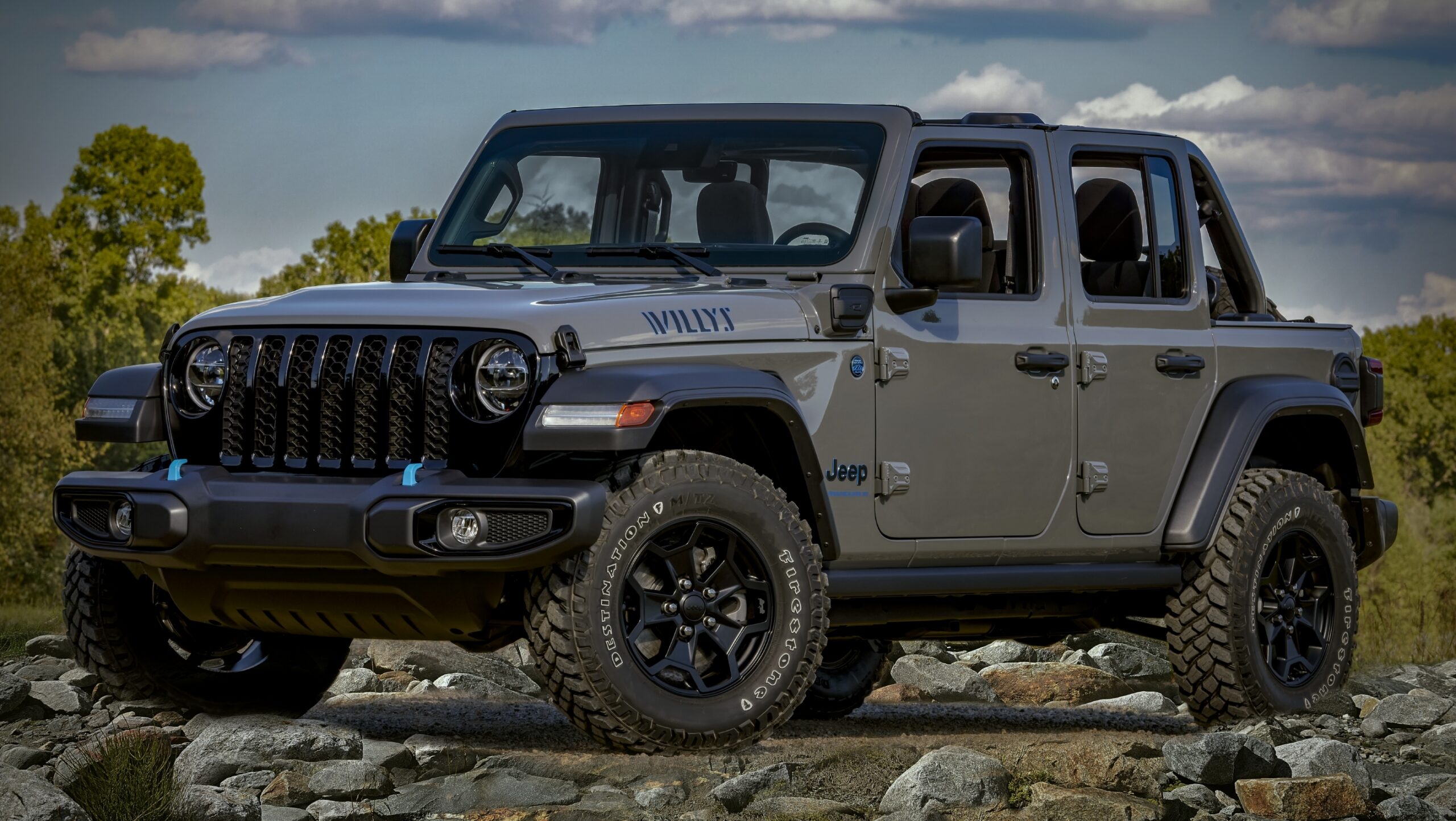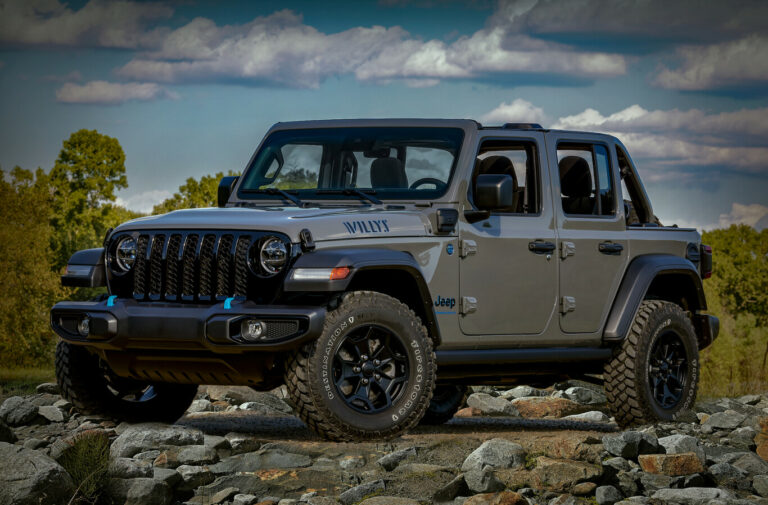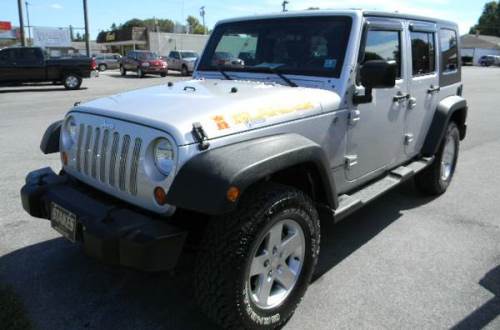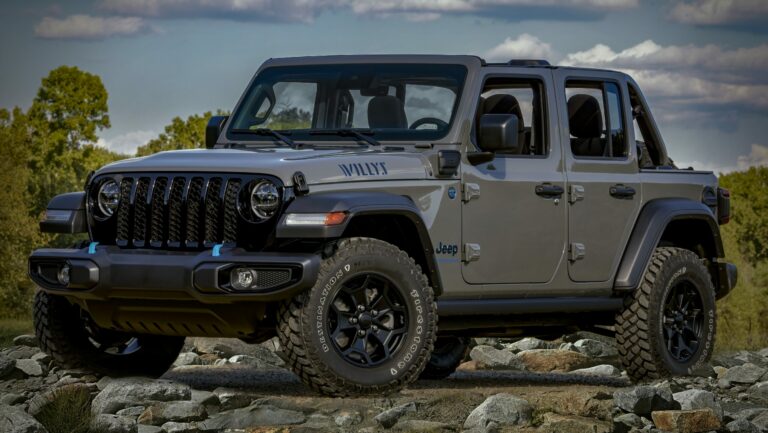Jeep Cherokee Comanche For Sale: Your Definitive Guide to Finding and Owning a Classic Jeep Pickup
Jeep Cherokee Comanche For Sale: Your Definitive Guide to Finding and Owning a Classic Jeep Pickup jeeps.truckstrend.com
In the vast landscape of classic American vehicles, few stand out with the rugged charm and enduring appeal of the Jeep Comanche. Often affectionately, and sometimes confusingly, linked with its SUV sibling, the Cherokee, the Comanche (model code MJ) represents a unique chapter in Jeep’s storied history. For enthusiasts and practical drivers alike, the quest for a "Jeep Cherokee Comanche For Sale" isn’t just about acquiring a vehicle; it’s about investing in a piece of automotive heritage renowned for its durability, simplicity, and unparalleled off-road capability. This comprehensive guide will navigate you through everything you need to know about finding, evaluating, and owning one of these iconic pickups.
Understanding the Legacy: The Jeep Comanche MJ Pickup
Jeep Cherokee Comanche For Sale: Your Definitive Guide to Finding and Owning a Classic Jeep Pickup
While the term "Jeep Cherokee Comanche" might suggest a hybrid, it’s crucial to clarify: the Jeep Comanche (MJ) is a standalone pickup truck produced by Jeep from 1986 to 1992. It shared its unibody architecture, front clip, interior, and many mechanical components with the highly successful Jeep Cherokee (XJ) SUV, hence the frequent association. This shared lineage is precisely what makes the Comanche so special: it combines the XJ’s legendary agility and robustness with the practicality of a pickup bed.
The Comanche was available in various configurations, including two-wheel-drive (2WD) and four-wheel-drive (4WD) options, short-bed (6-foot) and long-bed (7-foot) versions, and a range of trim levels from the basic Pioneer to the more upscale Chief, Laredo, and the sporty Eliminator. Engine options initially included a 2.5L AMC inline-four and a 2.8L GM V6, but the most sought-after and durable powerplant, the 4.0L AMC "PowerTech" inline-six, became available in 1987. This engine, particularly the High Output (HO) version introduced in 1991, is legendary for its reliability and power, making Comanches equipped with it highly desirable.
Why Buy a Jeep Comanche Today?
The appeal of a Jeep Comanche in today’s market is multifaceted, drawing in both collectors and those seeking a practical, no-nonsense truck.
Benefits:
- Unmatched Durability: The 4.0L engine is renowned for its longevity, often exceeding 200,000 or even 300,000 miles with proper maintenance.
- Off-Road Prowess: Thanks to its Cherokee roots, the Comanche boasts excellent ground clearance, capable 4WD systems (like the NP231 Command-Trac), and solid axles (Dana 30 front, Dana 35 or optional Dana 44 rear), making it highly capable off the beaten path.
- Classic Appeal & Rarity: As production numbers were relatively low compared to the Cherokee, the Comanche stands out. Its classic lines and unique truck bed make it a head-turner and a conversation starter.
- Practicality: It’s a true pickup truck with a functional bed, capable of hauling and towing, yet it retains the compact footprint and maneuverability of an SUV.
- Ease of Maintenance & Customization: Sharing many parts with the ubiquitous XJ Cherokee means a wealth of aftermarket parts and a strong community for support. Many common repairs can be done by a home mechanic.
- Investment Potential: Well-maintained or restored Comanches are steadily appreciating in value, making them a potentially sound investment.


Potential Challenges:
- Age-Related Wear: Being 30+ years old, most Comanches will have wear and tear. Rust is a significant concern, especially in areas exposed to salt.
- Safety Features: Lacking modern safety technologies like airbags, ABS (often), and advanced crumple zones, they require a more attentive driver.
- Fuel Economy: The 4.0L, while robust, is not particularly fuel-efficient by modern standards.
- Specific Parts Rarity: While many parts are interchangeable with the XJ, some Comanche-specific body panels (like the bed) or interior components can be challenging to find.

What to Look For When Buying a Jeep Comanche
Finding the right Jeep Comanche requires a keen eye and thorough inspection. Here’s a detailed checklist:
- Rust, Rust, Rust: This is the primary killer of Comanches.
- Frame Rails: Inspect the unibody frame rails, especially around the control arm mounts, spring perches, and rear bumper mounts. Significant frame rust is a major red flag.
- Floorboards & Rocker Panels: Check the cab floor from both inside and underneath, and examine the rocker panels for bubbling or holes.
- Bed: Look for rust in the bed floor, wheel wells, and tailgate.
- Rear Quarter Panels: These are notorious rust spots, particularly where the bed meets the cab.
- Fenders & Doors: Inspect for rust around wheel arches and door bottoms.
- Engine (4.0L I6 Preferred):
- Leaks: Check for oil leaks (rear main seal is common but not always critical, valve cover), coolant leaks.
- Sounds: Listen for knocks, ticks (especially the "lifter tick" on cold starts, which often goes away), or excessive engine noise.
- Overheating: Check coolant condition. Look for signs of overheating (discolored coolant, steam residue).
- Maintenance: Ask for service records. A well-maintained 4.0L is very reliable.
- Transmission & Drivetrain:
- Manual (AX-4/AX-5, AX-15): Test all gears, listen for grinding, feel for smooth engagement. Check clutch feel.
- Automatic (AW4): Ensure smooth shifts, no harsh clunks. Check fluid color (should be red, not dark or burnt).
- Transfer Case (NP231, NP242): Test 2WD, 4-Hi, and 4-Lo engagement. Listen for unusual noises. Check for leaks.
- Axles: Look for fluid leaks from differential covers or axle seals. Listen for humming or clunking noises.
- Suspension & Steering:
- Worn Components: Check for worn ball joints, tie rod ends, control arm bushings, and leaf springs (especially in the rear, look for sagging).
- Steering Play: Excessive play in the steering wheel could indicate worn steering box, tie rods, or ball joints.
- Shocks: Look for leaks.
- Interior:
- Dashboard: Cracks are common due to sun exposure.
- Seats: Wear and tear are expected, but significant tears or structural damage might be costly to repair.
- Electrical: Test all lights, gauges, windows, HVAC, and radio.
- Documentation:
- Ensure a clear title. Be wary of salvage or rebuilt titles unless you understand the implications.
- Service History: Any records of past maintenance are a huge plus.
Where to Find a Jeep Comanche For Sale
Finding a Comanche isn’t as simple as walking onto a new car lot. It requires patience and searching in the right places:
- Online Marketplaces:
- Craigslist & Facebook Marketplace: Excellent sources for private sellers. Use broad search terms and be prepared to travel.
- eBay Motors: Often features a wider geographical spread and sometimes higher-end examples.
- Bring a Trailer / Cars & Bids: Occasionally feature very well-preserved or custom Comanches, often fetching premium prices.
- Specialized Forums & Groups:
- Jeep Comanche Club (ComancheClub.com): The definitive online community. Their "For Sale" section is invaluable.
- XJ/MJ Facebook Groups: Numerous groups dedicated to Cherokee and Comanche owners often have members selling their vehicles.
- Local Classifieds & Word of Mouth: Don’t underestimate old-school methods. Sometimes the best deals are found locally.
- Classic Car Dealers: Less common, but some specialize in vintage trucks and SUVs and might occasionally have a well-restored Comanche.
Pricing Your Purchase: A Comprehensive Guide
The price of a Jeep Comanche varies wildly based on condition, mileage, engine, transmission, and location. Here’s a general guide:
Factors Influencing Price:
- Condition: Rust-free examples in excellent running order command the highest prices. Project vehicles with significant rust or mechanical issues will be cheapest.
- Engine: 4.0L I6 models, especially High Output (HO) versions, are more desirable and fetch higher prices than the 2.5L or earlier V6s.
- Transmission: Manual transmissions (especially the AX-15) are often preferred by enthusiasts and can slightly increase value.
- Mileage: While the 4.0L is durable, lower mileage generally translates to higher value, assuming condition aligns.
- Trim Level: Eliminator and Laredo trims tend to be more desirable than Pioneer or base models.
- Modifications: Well-done, tasteful modifications (lift, upgraded tires, lockers) can add value, but poorly executed mods can detract.
Jeep Comanche MJ For Sale Price Guide
| Condition Category | Price Range (USD) | Key Characteristics |
|---|---|---|
| Project/Poor | $1,500 – $5,000 | Significant rust (frame, body panels), major mechanical issues (non-running, bad engine/trans), incomplete, suitable only for parts or a full, costly restoration by an experienced mechanic/fabricator. High mileage. |
| Fair/Driver | $5,000 – $12,000 | Runs and drives, but has noticeable rust (surface or minor perforation), cosmetic flaws (dents, faded paint, worn interior), minor mechanical issues (leaks, worn suspension), needs regular maintenance and repairs. Can be driven daily but requires attention. |
| Good/Restored | $12,000 – $25,000 | Minimal to no significant rust, solid frame, decent paint (might be older repaint), clean interior with minor wear, mechanically sound (4.0L engine preferred), all systems functional. May have tasteful modifications. Ready for regular driving with minimal fuss. |
| Excellent/Show | $25,000 – $50,000+ | Near-flawless condition, rust-free, pristine paint and body, immaculate interior, fully restored or exceptionally well-preserved original, all systems working perfectly. Low mileage examples, rare trims (Eliminator) in top shape. Collector-grade vehicles. |
Note: Prices are estimates and can fluctuate based on market demand, region, specific features (4WD, AC), and historical significance.
Tips for a Successful Purchase
- Pre-Purchase Inspection (PPI): Always, always, always get a PPI from an independent mechanic specializing in Jeeps or older vehicles. This can uncover hidden issues and save you thousands.
- Test Drive Thoroughly: Drive it on various road conditions – city, highway, and if possible, a bit of rough terrain to test 4WD. Listen for noises, feel for vibrations, and check braking performance.
- Check the VIN: Ensure the VIN on the vehicle matches the title. Run a VIN check for accident history or flood damage if possible.
- Be Patient: The perfect Comanche might not appear overnight. It’s better to wait for the right one than to rush into a problematic purchase.
- Budget for Immediate Repairs: Even a "good" Comanche will likely need some immediate attention (fluids, tune-up, minor worn parts). Factor this into your budget.
- Consider Transportation: If buying out of state, factor in shipping costs or the time/expense of driving it home.
Potential Challenges & Solutions
- Significant Rust: If frame rust is severe, it’s often a deal-breaker unless you have advanced fabrication skills or a substantial budget for professional repair. Minor surface rust can be treated.
- Parts Availability: While many parts are interchangeable with the XJ, Comanche-specific parts (like bedsides, unique trim pieces) can be rare. Join forums and network with other owners to find sources. Aftermarket support is decent for common wear items.
- Finding an Unmolested Example: Many Comanches have been lifted, modified, or used hard. Finding a clean, stock example can be challenging but often worth the effort for preservationists.
- High Mileage: Don’t be immediately deterred by high mileage on a 4.0L engine, if it has a documented history of proper maintenance and runs strong. A lower-mileage neglected engine can be worse than a high-mileage well-cared-for one.
- No Modern Safety Features: Drive defensively. Consider upgrading headlights, brakes (if applicable and possible), and ensuring all seatbelts are in good working order.
Frequently Asked Questions (FAQ)
Q: Is the Jeep Comanche really a Cherokee pickup?
A: Not exactly. The Comanche (MJ) is a distinct pickup truck that shares its unibody chassis, front end, and many mechanical components with the Cherokee (XJ) SUV. Think of them as platform mates rather than one being a derivative of the other.
Q: What is the best engine for a Jeep Comanche?
A: The 4.0L AMC inline-six engine, particularly the High Output (HO) version (1991-1992), is overwhelmingly considered the best for its legendary reliability, power, and longevity.
Q: Are parts hard to find for a Comanche?
A: Common mechanical parts (engine, transmission, axles, suspension) are largely interchangeable with the XJ Cherokee, so they are readily available. Comanche-specific body panels, trim, and interior components can be harder to source, often requiring searching junkyards, online forums, or specialty aftermarket suppliers.
Q: How much rust is too much when buying a Comanche?
A: Any significant rust on the unibody frame rails is a major concern and can be very expensive or impossible to repair safely. Surface rust on body panels is manageable, but perforating rust indicates deeper issues. Prioritize a solid, rust-free frame.
Q: Can a Jeep Comanche be a reliable daily driver?
A: Absolutely, with proper maintenance and attention to age-related wear. Many Comanches are still daily driven today. Their simple, robust design makes them relatively easy to keep on the road, though you should be prepared for typical upkeep of a 30+ year old vehicle.
Q: What’s the "Eliminator" trim level?
A: The Eliminator was the sportiest and often most equipped trim level for the Comanche, featuring unique decals, bucket seats, a sport steering wheel, and often came with the 4.0L HO engine and 4WD. It’s highly sought after by collectors.
Conclusion
The search for a "Jeep Cherokee Comanche For Sale" is a journey into the heart of American automotive history. The Jeep Comanche is more than just a truck; it’s a testament to rugged design, enduring capability, and a unique blend of SUV agility with pickup practicality. While acquiring one requires careful inspection and a realistic understanding of potential challenges, the rewards are immense. From its bulletproof 4.0L engine to its undeniable classic appeal, a well-chosen Comanche offers a driving experience unlike anything else on the road today. For the discerning enthusiast, it’s not just a purchase; it’s an adoption of a legend that promises countless miles of adventure and a rewarding sense of ownership.







